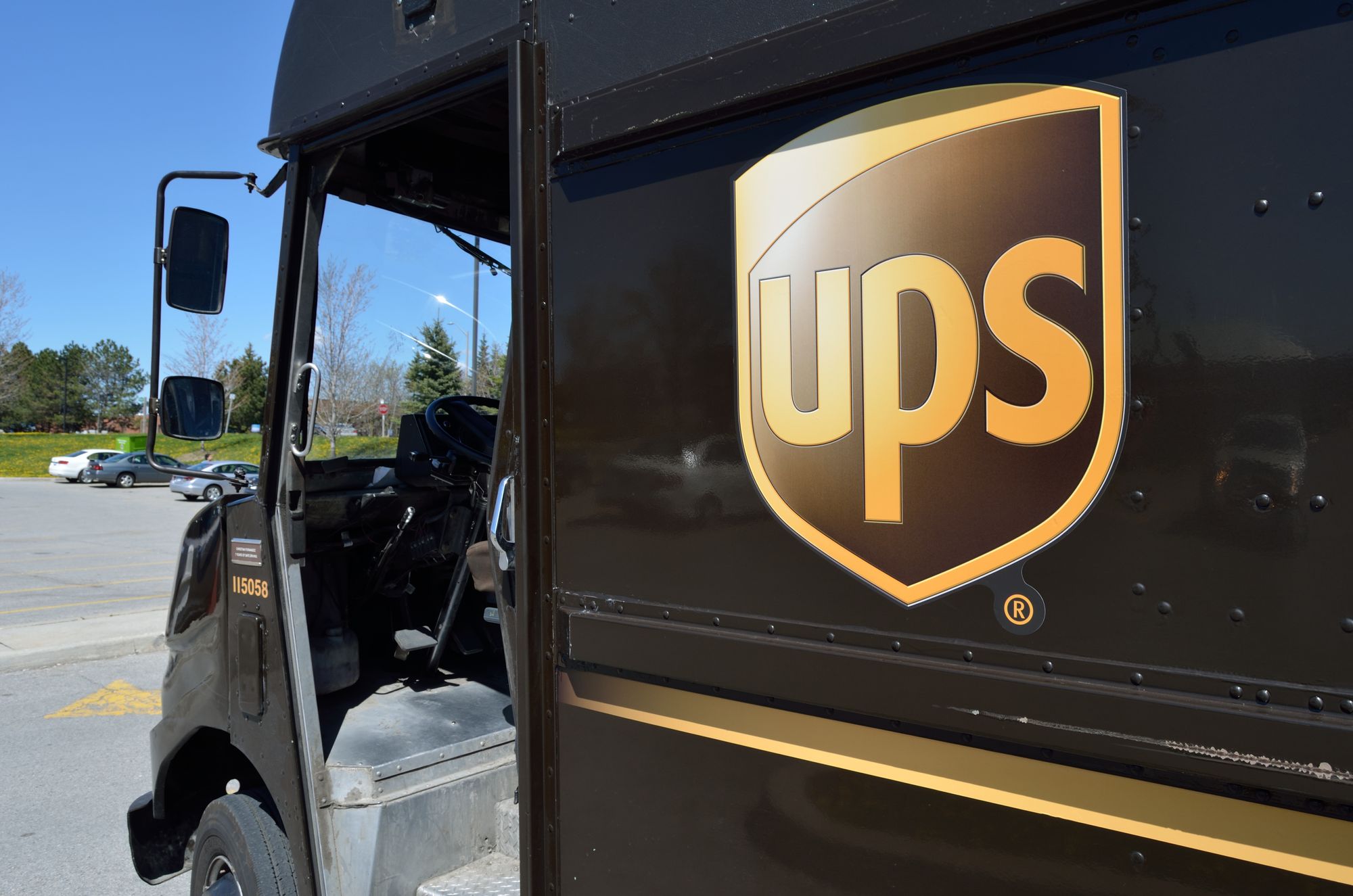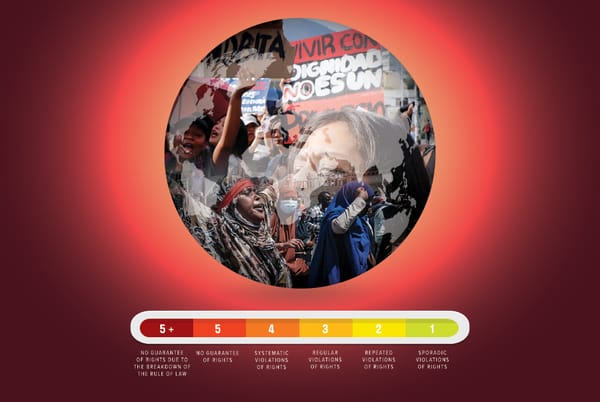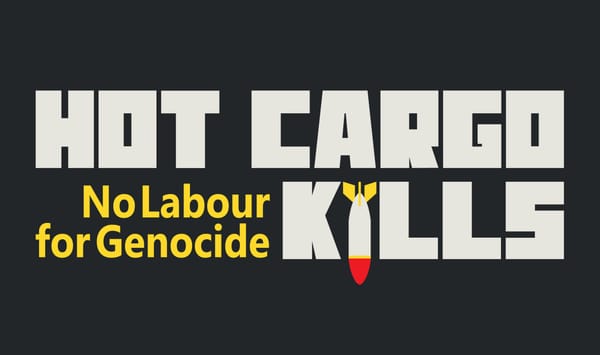
On July 25, the U.S. International Brotherhood of Teamsters announced that they had reached a tentative deal with United Parcel Service (UPS), securing a new national collective agreement covering more than 340,000 American workers. Although the membership still needs to vote on the proposed agreement throughout August, the national negotiating team is recommending Teamsters vote “yes” and celebrating the contract as “the most historic tentative agreement for workers in the history of UPS.”
News of the tentative deal came as somewhat of a shock, a strike seeming all but inevitable after talks broke down earlier in the month and the Teamsters ramped up strike preparation across the country. The union — now led by reform leadership under general president Sean M. O’Brien — has taken a decidedly more militant tone this round of bargaining and organized widely among the rank-and-file membership throughout the negotiations.
As O’Brien told CNN, after progress was initially made in negotiations addressing working conditions, such as air conditioning in all new delivery vehicles, talks stalled when UPS refused to budge on improving pay and protections for part-time workers, who make up roughly 150,000 workers throughout UPS warehouses and other facilities and earn as little as $16.20 per hour. The issues facing a growing and undervalued part-time workforce, as well as a “two-tier” model of pay and benefits, were key targets for reform during the union’s bargaining campaign.
The Teamsters leadership is characterizing the tentative agreement as an unequivocal victory, and based on the details available thus far, it’s hard to argue otherwise. In the union’s press release announcing the deal, O’Brien said, “UPS has put $30 billion in new money on the table as a direct result of these negotiations. We’ve changed the game, battling it out day and night to make sure our members won an agreement that pays strong wages, rewards their labour, and doesn’t require a single concession. This contract sets a new standard in the labour movement and raises the bar for all workers.”
Had the tentative agreement not been secured, Teamsters would have walked off the job on August 1, a potentially significant blow to UPS and the broader American economy. As has been cited many times throughout the negotiations, Teamsters at UPS handle roughly 6 per cent of American GDP on a daily basis. The strike would have also spiked American strike figures to an incomparable extent. According to data compiled by Bloomberg Law, approximately 322,000 workers have been on strike so far this year in the U.S. A walkout by UPS Teamsters would have amounted to more union members on strike at a single employer than all workers in the country combined over the past six months. Moreover, it would have been the largest strike in the private sector in decades. Needless to say, the stakes were high for both sides.
Although a strike didn’t materialize, it’s clear that Teamsters' willingness to strike played an enormous role in securing this tentative contract. Strike preparation and mobilization among the membership were extensive. Practice pickets at facilities across the country had already commenced, and savvy media-relations and rank-and-file organizing machines went to work months ago to make it clear that if walking off the job was necessary to win workers’ demands, Teamsters were ready and willing to do it. A credible strike threat brought UPS back to the table on July 25 with an offer the union leadership could accept.
The deal includes: an across the board raise of $2.75 per hour in 2023, and wage increases totaling $7.50 per hour over the life of the contract; an immediate raise to $21 per hour for part-timers, with some receiving as much as a 48 per cent raise over five years; Martin Luther King Jr. Day as a paid holiday; an end to forced overtime and additional shifts on scheduled days off; and the creation of 7,500 new full-time positions and a commitment to fill the roughly 22,500 open positions, both of which create new opportunities for current part-timers to gain full-time, unionized employment at UPS.
The raise for current full-time parcel delivery drivers, up to $49 per hour, will keep them the highest paid workers in the sector. Much has been made in the media about the annual salaries of UPS delivery drivers — some making as much as $95,000 per year. Missing from nearly all of this commentary were two important facts: first, this includes overtime, which many Teamsters drivers perform an inordinate amount of; and two, the majority of Teamsters members at UPS earn nowhere near this, both because of the growth of part-time work in the warehouses and because of changes in the previous collective agreement that allowed the company to hire drivers under inferior terms and conditions.
In an effort to address these issues, the union was able to eliminate the hated “22.4” provision from the collective agreement, which had previously established a separate tier of UPS drivers paid at a lower rate and without the same benefits and job security as regular drivers. The Teamsters managed to force the company to reclassify the “22.4s” as regular package car drivers with full seniority rights and full pay. This is perhaps the most important victory contained in the tentative agreement — the achievement can’t be overstated.
The Teamsters for a Democratic Union (TDU), a caucus that has long struggled to reform the union from the inside and create an organized and militant rank-and-file — and that also supported O’Brien’s bid for union president — is also celebrating the tentative agreement. In its rundown of the deal, the caucus noted that “TDU members worked for years to rebuild union power at UPS and we’re not done yet.” Unquestionably, without the years of TDU organizing, this historic contract would have never been possible.
Despite historic gains, there are nevertheless some signs that members are unhappy with aspects of the proposed settlement. In particular, the raise for part-timers remains below what many members sought. If such discontent is widespread, members could still reject the tentative agreement, send the union bargaining team back to the table, or force a strike after all. At this stage, it remains uncertain how extensive dissatisfaction with the agreement might be or how much capacity there is among the union membership to organize a “vote no” campaign, particularly when a new and popular leadership and the TDU are both celebrating the deal as a victory.
Winning an impressive contract at UPS was in many ways a litmus test for not only the Teamsters but for the American labour movement more broadly. The Teamsters have ‘talked strike’ since before negotiations with UPS began, and have explicitly tied their prospects for organizing at Amazon to their ability to win at UPS. That the victory came in the form of a negotiated settlement rather than a contract secured after a strike may dampen its exemplary effect. The union will have to work to publicize its win if it wants this example to encourage Amazon workers to take the risks of organizing and potentially join the Teamsters union.
The deal will now proceed through a two-step process of ratification voting. First, at the “two-person” meeting stage, two delegates from each of the 176 Teamster locals from across the country will convene to discuss the agreement and vote on whether to recommend it to the general membership. Following a successful vote in the process, the general membership will vote on whether to accept the contract between August 3 and 22. No matter how these votes turn out, at present we can safely say an historic tentative agreement has been achieved.
What this all means for Canadian UPS Teamsters we will only find out in time. Teamsters Canada has a separate national contract with UPS that doesn’t expire until 2025. While some of the deep concessions previously imposed on American Teamsters are not contained in the Canadian agreement, the growth of part-time and insecure work, among warehouse workers as well as drivers, remains a problem in Canada.
Whether the Canadian Teamsters will seek to build on the American UPS agreement remains to be seen — but the Canadian section of the union has nevertheless just been handed an inspiring victory and proof that an effective mobilization strategy can get the goods for workers. Hopefully Teamsters Canada — and unions in general — take note.
Recent Class Struggle Issues
- August 1 | Iqaluit Workers In The Midst Of One Of Canada’s Longest Strikes
- July 24 | Board’s Ruling Against Port Workers A Blow To Labour Rights
- July 17 | The Tide May Be Turning For Organized Labour In Canada
- July 10 | Child Labour Is Making A Disturbing Resurgence Across The U.S.







